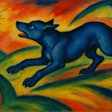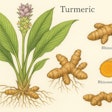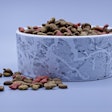Domestic dogs diverged from grey wolves between 13,000 and 17,000 years ago when food waste from human settlements provided a new niche. Compared to the carnivorous cat, modern-day dogs differ in several digestive and metabolic traits that appear to be more associated with omnivores such as man, pigs and rats. This has led to the classification of dogs as omnivores, but the origin of these “omnivorous” traits has, hitherto, been left unexplained.
This study discusses the foraging ecology of wild wolves and calculates the nutrient profiles of 50 diets reported in the literature. Data on the feeding ecology of wolves indicate that wolves are true carnivores consuming a negligible amount of vegetal matter. Wolves can experience prolonged times of famine during low prey availability while, after a successful hunt, the intake of foods and nutrients can be excessive. As a result of a “feast and famine” lifestyle, wolves need to cope with a highly variable nutrient intake requiring an adaptable metabolism, which is still functional in modern-day dogs. The nutritive characteristics of commercial foods differ in several aspects from the dog's closest free-living ancestor in terms of dietary nutrient profile, and this may pose physiological and metabolic challenges. The study provides new insights into dog nutrition and contributes to the ongoing optimization of foods for pet dogs.
Source: Guido Bosch et al., 2015. Dietary nutrient profiles of wild wolves: insights for optimal dog nutrition. Br J Nutr online, January 2015. doi: 10.1017/S0007114514002311.


















